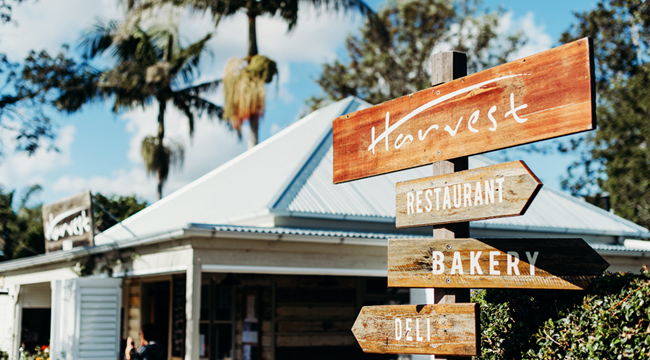
Remember a couple of years ago when we all collectively decided that the phrase “farm-to-table” had been irrevocably overused? Rode hard and put up wet, we beat that term beyond redemption. The appropriation of farm-to-table branding by fast-food chains like McDonald’s created confusion as to what those words even mean when lumped together. Is it just a pretty way to say that the food was grown in the ground and eventually made its way to a table? Because that’s not exactly revolutionary.
In a world where greenwashing is far more prominent than an actual commitment to sustainability, restaurants like Australia’s Harvest offer a pleasant surprise. There are no bold declarations splayed across the banner of its website. There are, however, words like “local,” “artisanal,” and “sustainability.” Words that have become part of the waltz used to describe the values farm-to-table once stood for, pre-dilution. And one feels these values on a visit to Newrybar, the town in New South Wales where the restaurant has resided since opening in 2007.
Harvest has all the sensibilities of the community that supports it. Newrybar is in the Byron Bay Hinterland — an area lush with local produce, producers, and wild ingredients. The town was founded in 1881. The town’s bread oven, now Harvest’s still-in-use crown jewel, was built around the turn of that century. Once upon a time, the entire town would use the oven to make the baked goods for the region. Harvest replicates tradition with a weekend event known as Sourdough Saturdays. My girlfriend, Jess, and I were recently able to pass through for a lunch of kangaroo, prawns and rosé.
There is a theme to be taken away from eating at a place like Harvest. Not only do they redefine farm-to-table as community-to-kitchen, but they’re part of a movement slowly building the foundation of new post-Inconvenient Truth and post-colonial cuisine culture. Ask an American what are uniquely American food traditions and you may get a dissertation on barbecue or a rant on where to find the best hamburger. Perhaps — with a little luck — they’re dialed into Indigenous foods and the resurgence of Native cuisine. Meanwhile, ask an Aussie (who may or may not be familiar with Aboriginal foodways) what is Australian food and a common answer might be: “You can get everything here. Asian food, Italian, kebabs, meat pies…” and so forth.
Chefs like Harvest’s Alastair Waddell (and Matt Moran at Aria, Danielle Alvarez at Fred’s in Sydney, among others) have been tactically dismantling that philosophy by diligently riffing on eclectic food traditions with distinctly Australian products and ingredients. A Taste of Kakadu, in the Northern Territory, is helping realign the very idea of “Aussie Food” and re-centralize the conversation around Indigenous Australians. The proof of how all these influences merge is in the pandanus vinegar at Harvest.
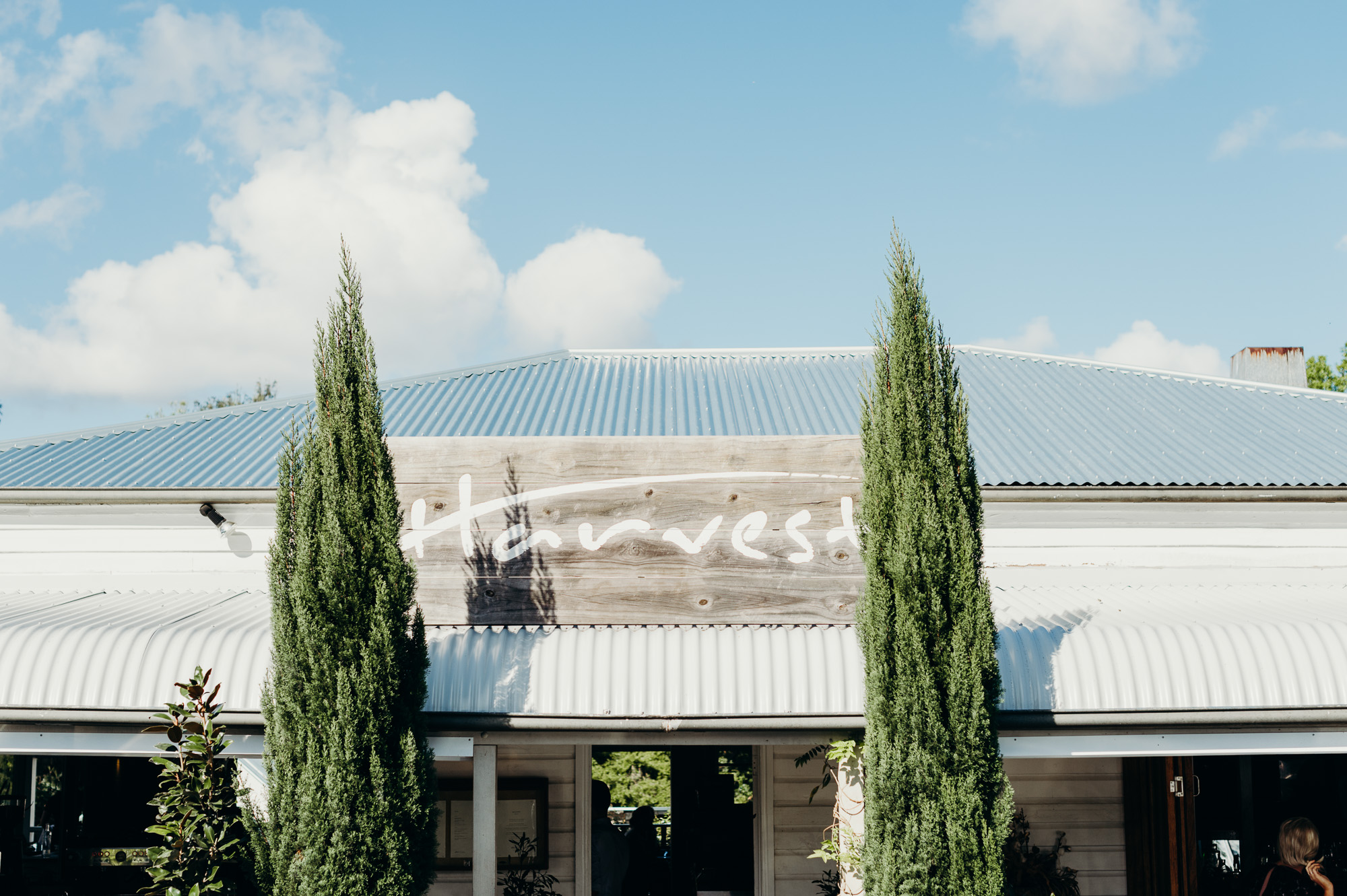
Pandanus is a palm-like shrub with tropical fruit found throughout Oceania and long-used by Indigenous populations. You may have avoided fallen fruit while strolling along the waterline on Australia’s Gold Coast and Byron Bay beaches. At Harvest, horticulturist Peter Hardwick takes great care to sustainably* collect ingredients from the surrounding area. An intriguing aspect of the dining experience at the restaurant is a glossary of foraged foods assembled by Hardwick, which is available by request and includes native plants like lemon myrtle, riberries, warrigal greens, and aniseed myrtle. This modest pamphlet simply categorizes the native and non-native foods foraged and gives a brief, no-frills description — unless the ingredient has actual frills like the sea purslane, a coastal succulent.
*Peter’s foraging tips include: 1. Making sure it’s actually edible; 2. Harvesting from clean sites (not polluted and no pesticides; 3. Not harvesting from conservation zones like nat’l parks and nature reserves; 4. Never harvesting an entire plant; and 5. Harvesting weeds, not spreading them.
The combination of wild foraged ingredients and community supported sourcing — Harvest spends around AUS$1.2 million yearly on local food producers and farmers — culminates in a Chef Series called “Local Harvest.” Chefs invited to the restaurant work with Chef Waddell to build one-off menus that embody this contemporary Australian fare that utilizes the lesser-known ingredients harvested by Peter Hardwick. The dinner is hosted on scheduled Wednesdays, the menu only set after a day of foraging and developing (including pickling and fermenting), reveals which foods are available.
Yet, one doesn’t have to attend Local Harvest to bask in sunshine-like flavors of the Hinterland surrounding Byron Bay. A drop-in to partake in to taste Harvest’s lunch menu will suffice.
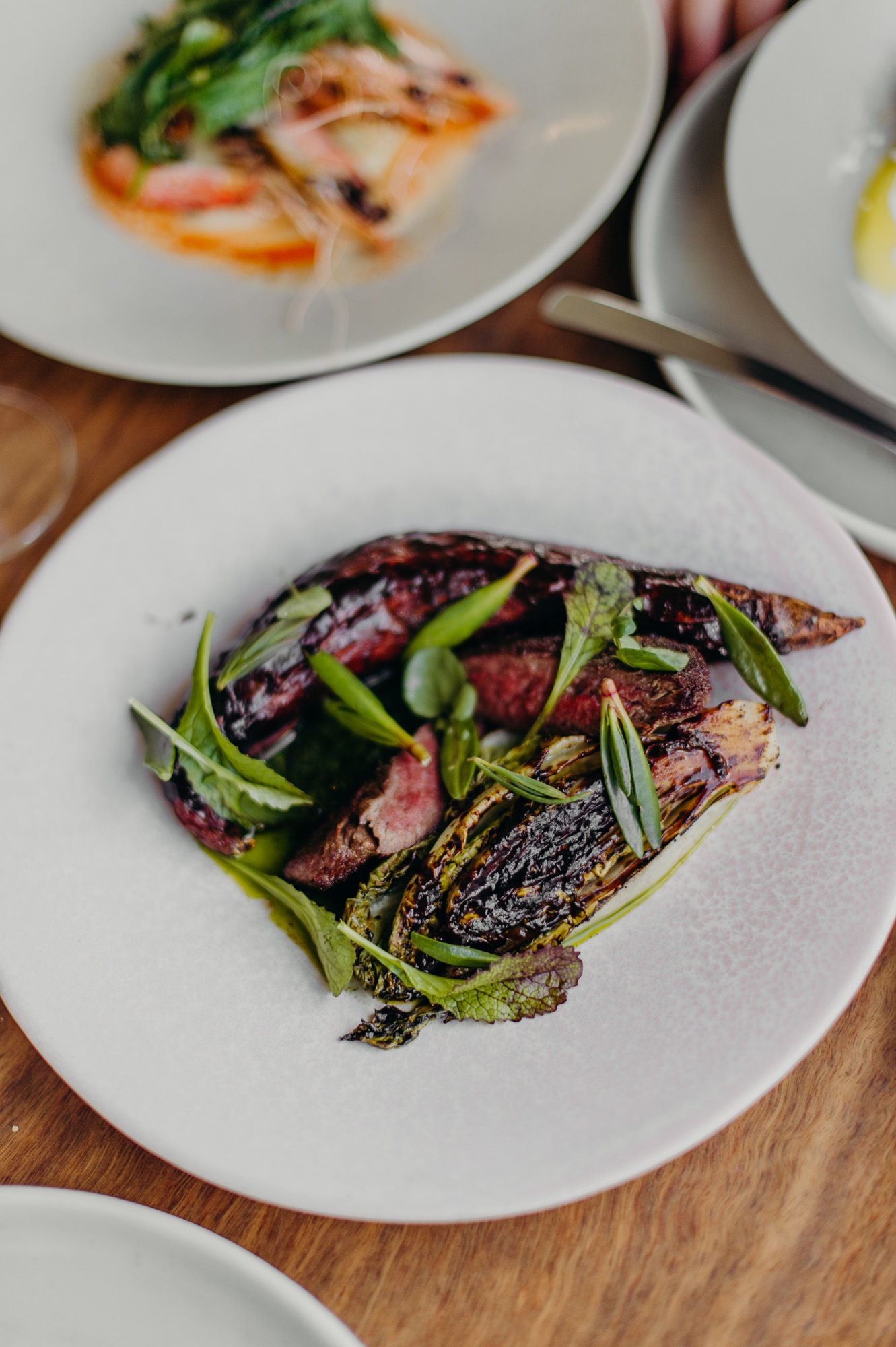
On a recent visit, despite polite warnings of over-ordering from Elia, our server, Jess and I dove in the deep end of Harvest’s lunch menu. I personally love kangaroo, and Harvest was the first place I tried it, last year. It’s lean, like Buffalo, and because of the strict culling standards and the fact that it doesn’t rely on the production of grain — it eats bush shrubs — it is considered more sustainable and better for the environment than other meat. Harvest’s kangaroo comes with a perfectly charred sweet potato, radicchio and sea purslane (the succulent garnish mentioned above, which, full disclosure, I ate).
The sashimi was clean and tart, unrevealing toward any trace of fishiness: the customary flaw one’s palette habitually searches for. The Ballina prawns were soft, tender and sumptuous. But it was the lamb that stole the day. Sodden in lime & peppercorn dressing, it had been ordered as an afterthought. We were both famished and pulled lamb always seems intriguing. Australians do not usually have a proclivity toward spicy heat. This lamb, though not hot, was delicately peppery and glazed slightly sour, a flavor orbiting piquant. It was eye-roll back, food-orgasm delightful.
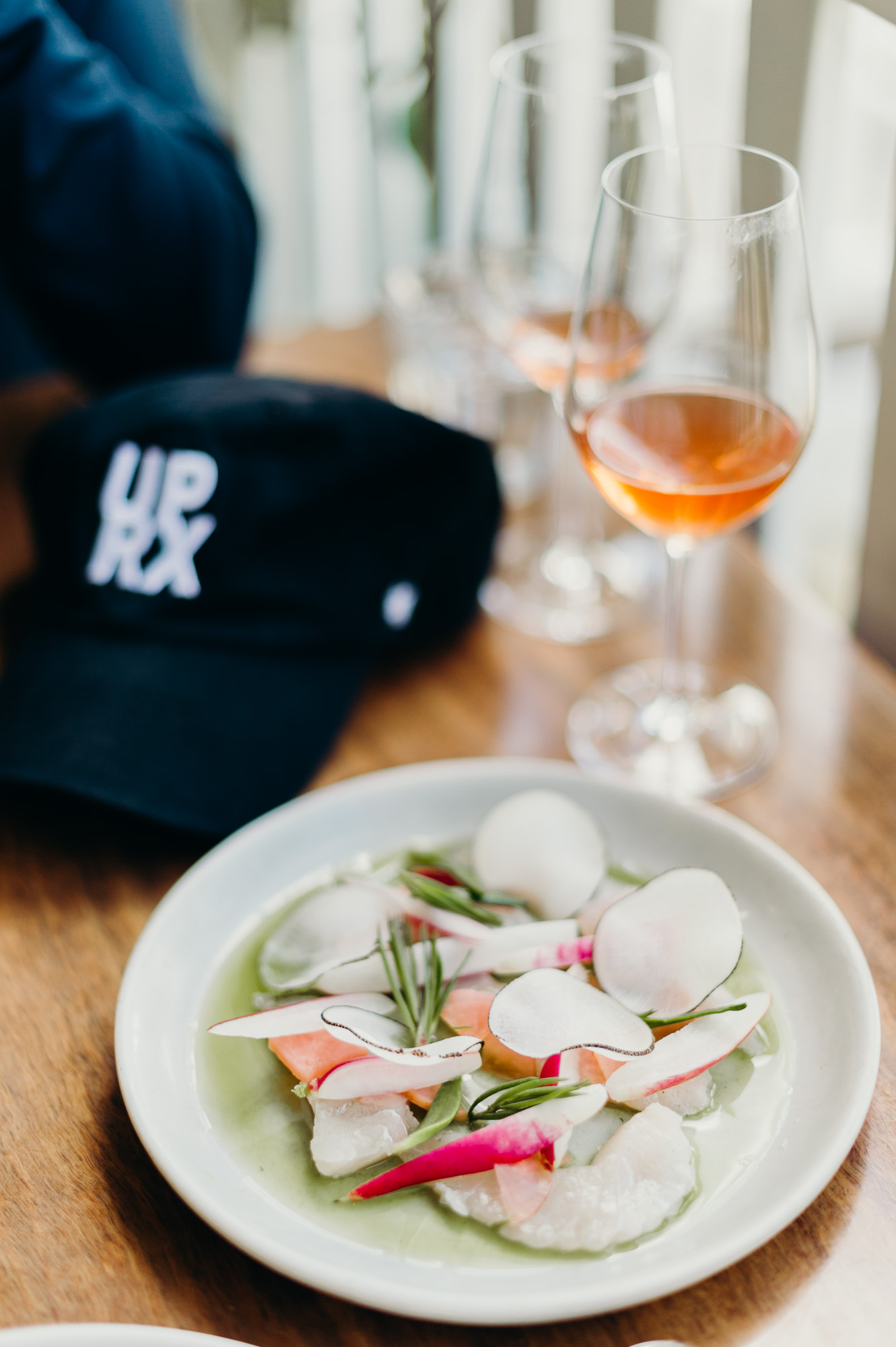
As a diner, I’m not opposed to shelling out some quasi-disposable income on a mind-blowing meal. I’m wearing the same pants I’ve had since 2013 to be able to justify that endeavor. Yet, Harvest is insanely affordable for the quality of service, amount/quality of food portions and setting you get for your Australian dollar. The life-changing lamb described above rang in at AUS$16, about $11.60 in good ol’Merican money with tax included (as is the refreshing custom in Australian dining).
This is all to say, so often the critique of localvore spots that are on the fancy side of dining out is framed around a certain question: can locals actually afford to eat there? It’s nice to support regional farmers and producers, but if the folks that grow that food are priced out, or can’t get a reservation, is it all worth the accolades? Harvest, instead, seems proudly accessible to their community. There’s a companion deli and food goods store next to the building that houses the restaurant. There’s a permaculture garden. Not least, as an unrepentant coffee snob, I can attest that the coffee they serve at their small stand is a glorious representation of Australia’s already stellar cafe culture.
“It’s about realization, understanding, and pride of our Indigenous people and their food,” explained Georgia Bateman of Harvest in an email regarding the new soul of Australian food culture. “These old but new-to-restaurant elements coupled with amazing local producers have given us what we have always desired: Time and place on a plate.”
Accessibility may be the territory where farm-to-table died a gory-but-necessary death. It became a buzzword floating in a spectrum of interpretations so vast that even McDonald’s felt safe in its usage. But farm-to-table doesn’t always speak toward community, an aspect of the relationship that can truly energize a restaurant. It’s evident in the shops and wares merchants that accompany Harvest in Newrybar, which is settled on just a small strip of road.
And like a road that only goes to one place, I keep arriving to the same, aforementioned trend — using distinctive local products in well executed, simple dishes to explore a sense of location — when I think of the spirit that farm-to-table once embodied. A meal at Harvest, especially for a visitor, is an interactive window into that exploration.
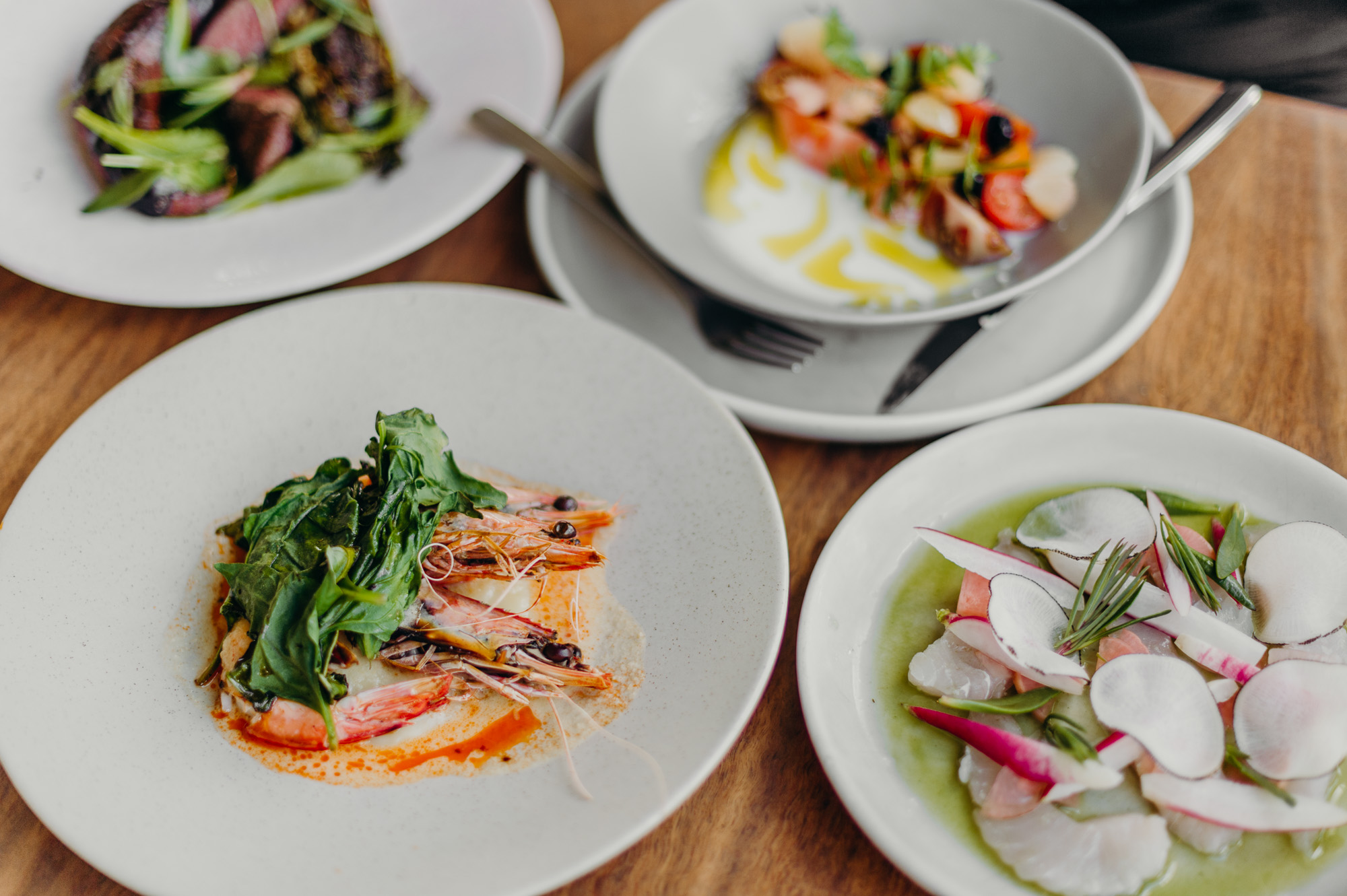
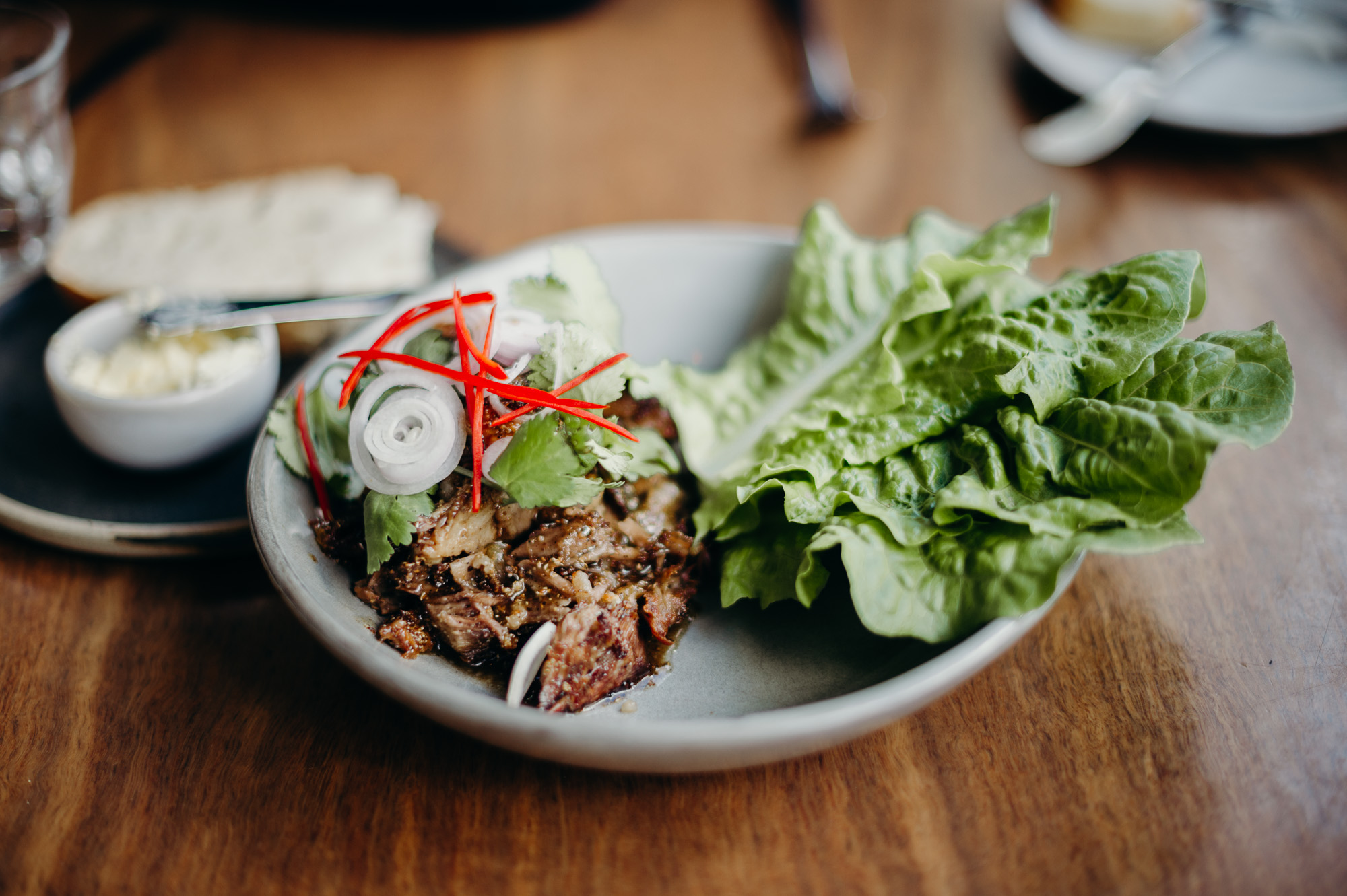
Pulled lamb, cos lettuce, lime & peppercorn dressing.
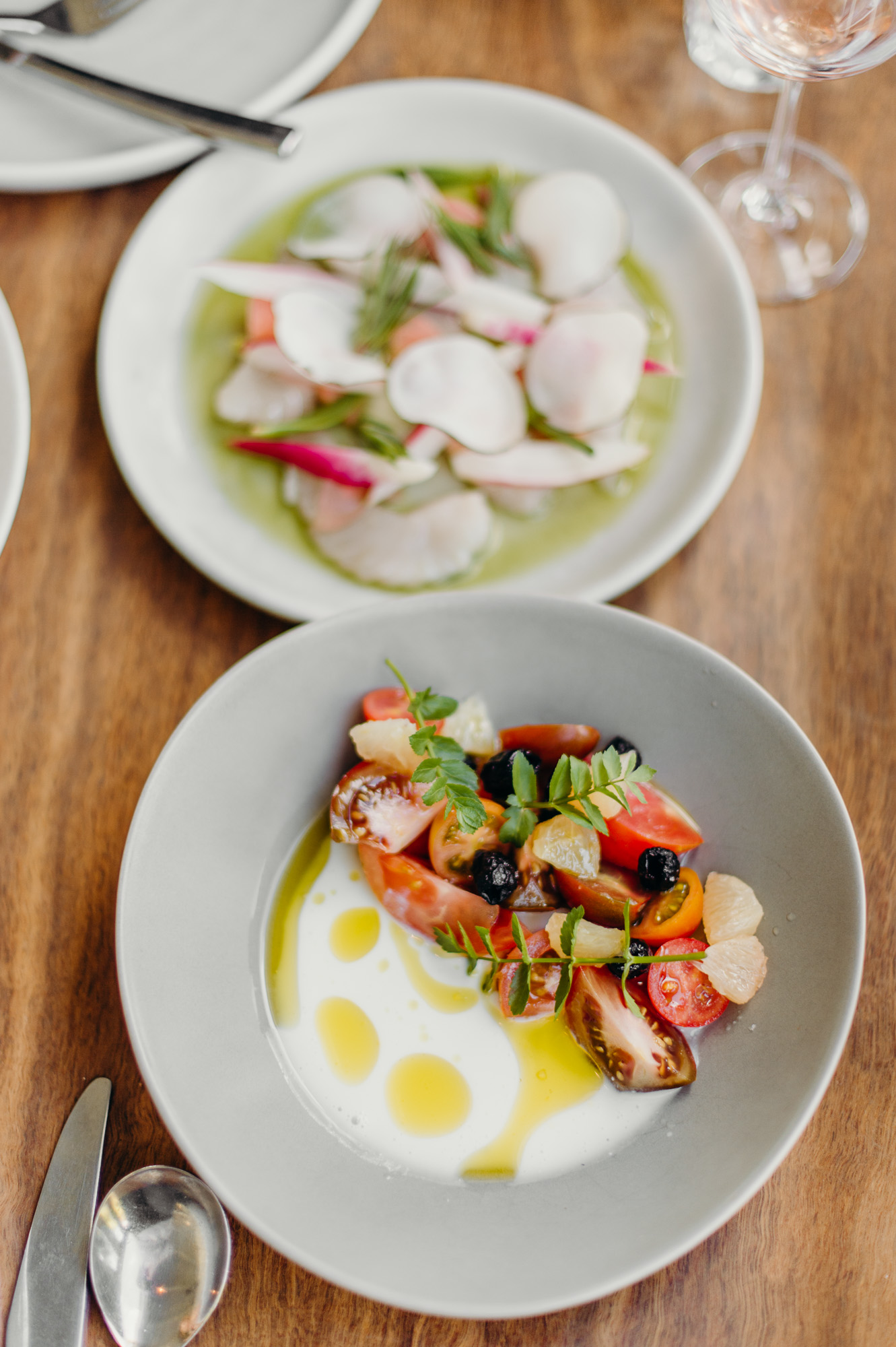
Cooper’s Shoot tomato, buttermilk, candied olive, pandanus.







